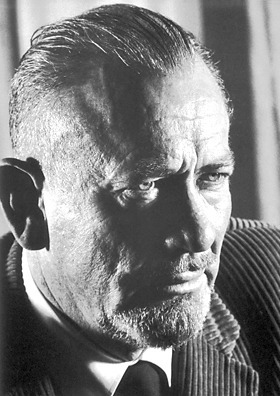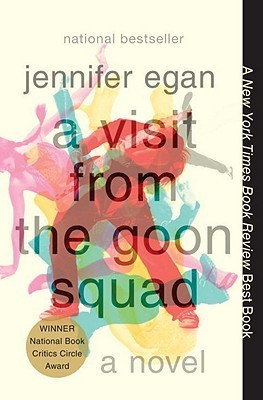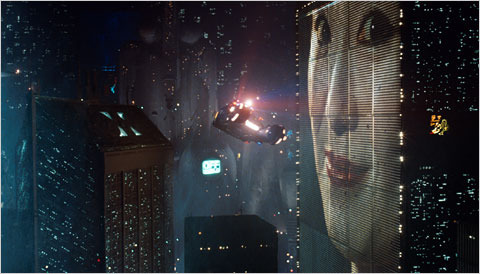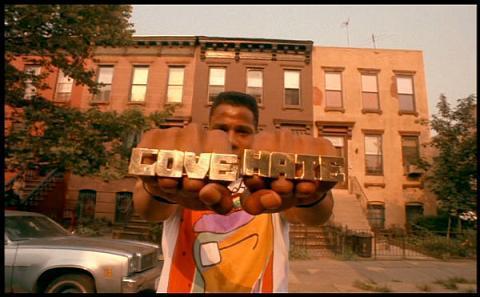Len Gutman's Blog, page 23
May 15, 2011
AFI #95: The Last Picture Show
 I'll say this for 1971′s The Last Picture Show — Cybill Shepherd looked hot. As for the film itself, I thought it was as slow and dull as life must have been in Anarene, Texas in the 1950s! I didn't read the book by Larry McMurtry upon which this film was based, but I imagine it was much more detailed about the lives of the characters in this story. I think one of the fatal flaws of most films made from epic novels is that you simply can't get into all the details in two hours so the film is left leaving the viewer wondering why everyone is acting the way they are and why the plot moves in the direction it does. Which is a long winded way to say that I thought the characters in this film were really flat.
I'll say this for 1971′s The Last Picture Show — Cybill Shepherd looked hot. As for the film itself, I thought it was as slow and dull as life must have been in Anarene, Texas in the 1950s! I didn't read the book by Larry McMurtry upon which this film was based, but I imagine it was much more detailed about the lives of the characters in this story. I think one of the fatal flaws of most films made from epic novels is that you simply can't get into all the details in two hours so the film is left leaving the viewer wondering why everyone is acting the way they are and why the plot moves in the direction it does. Which is a long winded way to say that I thought the characters in this film were really flat.
The film revolves around a couple of high school friends in a tiny Texas town in the 1950s. The town is decaying and these soon to be graduates are "coming of age" as it were. Sonny Crawford is lonely and bored, and after breaking up with his girlfriend he begins a strange affair with the 40-ish wife of his coach. The wife, played by Cloris Leachman, is a pathetic and unattractive woman, so we can guess young Sonny is sleeping with her out of pure boredom and a teenage desire to get laid (I read that in the book the coach is a closet homosexual, so it would make sense she was unhappy). The other best friend, Duane Jackson, is trying desperately to sleep with the desirable Jacy Farrow (Shepherd), but he's a bit of a loser and she doesn't want to get stuck with him for the rest of her life. Jacy is looking for anything to get her out of the life of her mother, so she gloms on to whatever man she can find, including sleeping with the much older Abilene.
Sex is the common theme in this film — everyone is trying to get it in disturbing ways. Jacy sleeps with everyone. Sonny sleeps with a much older woman (this would be statutory rape by the way). The boys pony up money for the "slow-witted" Billy to get laid by a disgusting prostitute. One of the boys kidnaps a little girl and is caught by police having only "gotten her underwear off." A group of rich teens have a weird ritual where they skinny dip and as an initiation the newbie has to stand on the diving board and get naked while everyone watches. This was quite a depraved town!
I suppose The Last Picture Show was quite bold for its time. My goodness, there were tits on screen. But I am not willing to let the period dictate whether or not I think a film is good. The Last Picture show was nominated for Best Picture in 1972 along with Fiddler on the Roof, A Clockwork Orange, Nicholas and Alexandra and eventual winner The French Connection. I haven't seen Nicholas and Alexandra, but the other three are far superior to The Last Picture Show in my mind. I'm also not sure why all the fuss about director Peter Bogdanovich. Aside from this, and Paper Moon he hardly directed anything worth a shit, and in the past 20 years or so his biggest claim to fame is being an extra on The Sopranos. I'm sensing a theme so far with these AFI reviews — history has a muddy memory. I did not like The Last Picture Show and cannot recommend it.
Next Up: AFI #94 Pulp Fiction
Filed under: AFI Top 100








May 12, 2011
Enjoying the Classics (or Why I Love Steinbeck)
 I like to mix things up when I'm reading, so I will often follow up fiction with non-fiction and vice versa. I also like to check in with classic authors every so often to remind myself what great writing is all about (not that there aren't any great modern writers, but let's be honest…the Hemingways and Fitzgeralds are fewer and farther between nowadays). I have to admit though that I'm not a huge fan of the classics, but I do have a soft spot for American masters. Which brings me to John Steinbeck.
I like to mix things up when I'm reading, so I will often follow up fiction with non-fiction and vice versa. I also like to check in with classic authors every so often to remind myself what great writing is all about (not that there aren't any great modern writers, but let's be honest…the Hemingways and Fitzgeralds are fewer and farther between nowadays). I have to admit though that I'm not a huge fan of the classics, but I do have a soft spot for American masters. Which brings me to John Steinbeck.
Somehow I managed to get through high school and four years of college without having ever read a Steinbeck novel. The closest I ever came was seeing the 1992 Gary Sinise film version of Of Mice and Men. I always assumed that I wouldn't like Steinbeck because he was too commercially successful, and that is in fact what many critics argued when he won the Nobel Prize for Literature in 1962. Then something interesting happened to change my mind — I read a Steinbeck novel!
As a graduate student in English at NAU a few years ago I took a class in which we had to read East of Eden. I remember thinking to myself it was going to be a struggle and that I'd have to slog through it, but once I started reading the words on the page I was sucked in. This post isn't about East of Eden, but suffice it to say it is now one of my all-time favorite novels and features one of my all-time favorite literary characters in Samuel Hamilton.
Steinbeck writes about everyday people and chronicled the American experience during his career, which spanned from 1927 with the publication of his first novel to his death in 1968. His political views played a major role in his writing, and his characters always seemed to say something powerful about what it takes to overcome poverty, hardship and even persecution. He was his generation's Michael Moore, and for me that's a good thing. He also touches on themes of religion and the difference between right and wrong, yet he does so without espousing any religious convictions or spirituality — giving him major points in my book.
After I graduated from NAU I decided to go back and, over time, read the entire Steinbeck collection. I've since read Tortilla Flat, The Grapes of Wrath, Cannery Row, The Wayward Bus, The Winter of Our Discontent and Travels with Charley. This weekend, after several mediocre reads, I decided it was time for a palate cleanser so I am now reading To a God Unknown. After just a few pages I feel like I've been rejuvinated. It's such a pleasure to sink into Steinbeck's warm storytelling and near perfect structure.
Just saying.
Filed under: Books








May 8, 2011
AFI #96: Do The Right Thing
Unfortunately for Mookie, doing the right thing isn't always easy, and that, in a nutshell, is the lesson of Spike Lee's 1989 film Do The Right Thing. Looking over the AFI list, I'm wondering if AFI did the right thing by including only one African-American directed film on its list of the top 100 American films of all time. Frankly, I'd have included a few other Spike Lee films, but that's me.
Do The Right Thing is one of my favorite films and seeing it again this weekend did nothing to change my opinion. The movie takes place on an extremely hot day in Brooklyn's Bed Stuy neighborhood. The heat is really just a metaphor for the racial tension that the film portrays as tempers flare at the neighborhood pizza joint, where Italian-Americans Sal and his sons serve up slices in the predominantly black community. The ruckus begins when patron Buggin Out notices that there are no famous African-American people on Sal's wall of fame, which is decorated with Italian-American heroes like Frank Sinatra and Al Pacino. Buggin Out calls for a boycott because "black people spend much money" in Sal's, but Sal says it's his place and his wall and he has the right to put whomever he wants on his wall. The tension culminates that night when things get out of hand as Radio Raheem joins the wall of fame cause leading to a fight in which the police accidentally kill him. It is at this crucial moment in the film when pizza delivery boy Mookie is faced with doing the right thing — and his choice has dire consequences for Sal. Does Mookie do the right thing when he throws a trash can through Sal's window? We have no idea, which is the point I think.
The film is about good and bad, dark and light, black and white, and of course right and wrong. The mood of the film plays into this dichotomy, and as the day gets hotter so too do the racial tensions. Do The Right Thing asks so many complicated questions around race. For Lee, nothing is off limits. Mookie is in a multi-cultural relationship with Rita (Rosie Perez in her first film role) and they have a child together. Older black men sit on the corner with nothing to do all day, waxing poetically about how come the Korean family has a successful business in their neighborhood and none of them do. Sal's son Pino, played with intensity by John Turturro, laments about how he wants to leave the black neighborhood because he doesn't like the people yet at the same time he tells Mookie his favorite actor is Eddie Murphy, his favorite musician is Prince and his favorite ball player is Magic Johnson. Lee deals with these issues head on as is his nature. In one scene, members of the community face the camera and spout off horrible racial stereotypes (here it is, NSFW):

Spike Lee is my favorite director, in part because he is fearless. But more than that, his films do what I think art is supposed to do: make us think, make us ask questions, teach us, and of course entertain us. Lee does this better than any American director in my opinion. When I think of great American directors I think of five: Martin Scorsese, Woody Allen, Francis Ford Coppola, Steven Spielberg and Spike Lee. Lee's films are mostly about the African-American experience, but of course that's just as American as the Italian-American or any other hyphen American experience. It just took decades of film making before someone like Lee was able to come around and make films about the black experience with such power and honesty. You might not like Lee's off camera persona, but I dare you to watch Malcolm X, Jungle Fever, Bamboozled or Do The Right Thing and not be educated and entertained.
In 1986 I was a sophomore at San Jose State when I wandered into the Camera Cinema in downtown San Jose and saw She's Gotta Have It. It was Lee's first major release and it was eye opening for me. I had never seen a film with an all black cast (I grew up in white bread America). It was funny, sexy, intelligent and beautifully filmed. Lee used his film school experience to explore African- American relationship issues, and of course the film introduced America to his character Mars Blackmon, who soon after this film came out was a fixture on American television pitching Air Jordan's to American kids — it's gotta be the shoes money!
His second major release was School Daze, a film that dealt with racial stereotypes within the black community. Anyone who has seen the musical dance number "Good and Bad Hair" will never forget it! Do The Right Thing came out next, and I spent an entire summer thinking about what it meant and blasting Public Enemy from my stereo, much to the chagrin of my very white fraternity brothers at Sigma Chi headquarters in Illinois. Lee has made so many great films, yet many white audiences have missed them — and that's a shame. Obviously you should see Do The Right Thing if you haven't, but here are some other ones you shouldn't miss:
Jungle Fever. It's about inter-racial relationships of course, and also introduced America to Halle Berry as an actress. We all know where she ended up, as the first African-American women to win an Oscar for Best Actress
He Got Game. The story of a young basketball star and what happens when his father is released from prison and tries to re-enter his life just as he's about to become rich and famous. This film opens with one of my favorite film moments ever as Lee juxtaposes African-American playground basketball to the music of Western-American composer Aaron Copeland. Hey, this is America too Lee seems to be saying.
Miracle at St. Anna. A World War II film told from the point of view of an African-American platoon. Yes, blacks fought in World War II!
Summer of Sam. A "New York Story" told during the summer New Yorkers were terrorized by the Son of Sam serial killer.
25th Hour. Edward Norton looks back at what got him there as he spends the last 25 hours he has before going to jail for seven years.
If God Is Willing and da Creek Don't Rise. A documentary about the aftermath of hurricane Katrina.
There are so many more. Take a look at his and enjoy. Another great thing about Lee is that he creates such compelling characters for actors. Just looking through the list of actors he's either introduced to film or worked with over the years is truly amazing. Denzel Washington. Wesley Snipes. John Turturro. Jada Smith. Halle Berry. Sam Jackson. Damon Wayons. Laurence Fishburne. Ossie Davis. Ruby Dee. Danny Aiello. Martin Lawrence. Branford Marsalis. Ed Norton. Angela Basset. Delroy Lindo. Alfre Woodard. Harvey Keitel. Andre Braugher. John Leguizamo. Adrien Brody. Mira Sorvino. Ellen Barkin. Kerry Washington. Clive Owen. Jodie Foster…Whew. Seriously. It goes on and on.
Do the right thing and catch up on some Spike Lee films! You won't be sorry.
Next Up: AFI #95 The Last Picture Show
Filed under: AFI Top 100








May 3, 2011
Pulitzer Gets a 'Visit from the Goon Squad'
 A few weeks ago author Jennifer Egan won the 2011 Pulitzer Prize for fiction for her novel "A Visit from the Goon Squad." I was just finishing up a book, so I downloaded it to my nook and moved it to the top of my rotation. Yesterday I finished it and I'm going back and forth on it frankly. It doesn't measure up to some recent Pulitzer winners like "The Brief Wondrous Life of Oscar Wao" by Junot Diaz or "Middlesex" by Jeffrey Eugenides, two of my all-time favorites. But I liked it.
A few weeks ago author Jennifer Egan won the 2011 Pulitzer Prize for fiction for her novel "A Visit from the Goon Squad." I was just finishing up a book, so I downloaded it to my nook and moved it to the top of my rotation. Yesterday I finished it and I'm going back and forth on it frankly. It doesn't measure up to some recent Pulitzer winners like "The Brief Wondrous Life of Oscar Wao" by Junot Diaz or "Middlesex" by Jeffrey Eugenides, two of my all-time favorites. But I liked it.
I hadn't read any of Egan's previous work, and truth be told I thought she was a chick lit author so I never even skimmed a jacket. I shall offer a mea culpa for that bit of chauvinism and admit right now that she is definitely a literary author. Goon Squad is a very modern tale written in a progressive style with interesting characters and told using a very unique literary device. Each chapter is told from the point of view of a different character, a character that you only learn about from the previous chapter. On top of that, the chapters jump back and forth across time so that there is no easy literary flow. I was intrigued by the device and at the same time confused. I thought the concept was great, but as a result it was very hard to follow. I sort of want to go back and read it again, this time keeping a flow chart of the relationships between all the characters!
With or without the literary chicanery, the characters are all very interesting and the individual stories are fun. It was fun to read. But at the same time, I feel like I didn't really follow the lives of the two main characters that well. The novel begins with Sasha, a young woman who we learn has a little issue with stealing things. She works for a record producer, Bennie, who was famous for discovering a popular punk rock band. Each chapter can be related back to Bennie and/or Sasha, even as they are told through the eyes of secondary and tertiary characters. For example, in one chapter Sasha's uncle is wandering the streets of Italy looking for Sasha, who has run away from home. He interacts with her while there, so we learn a little bit about her motivation. That's sort of how the novel goes.
I won't say anything else in case you want to read the novel, which I do recommend. Along with the Pulitzer it has won numerous accolades including the National Book Critics Circle Award. It was a PEN/Faulkner Award Finalist and a New York Times Book Review Best Book. I think it has won so many fans because of both the unique way Egan tells the story and because it's a modern tale that is very well written. I am definitely going to go back and look at Egan's other books now and will consider adding them to my reading list.
Filed under: Books








May 1, 2011
AFI #97: Blade Runner
 I've probably seen Blade Runner three or four times since it came out in 1982, and it's always been one of my favorites. It works on so many levels, from its message about the advances of science to it dark dystopian vision of Los Angeles. Frankly it's just a really cool film.
I've probably seen Blade Runner three or four times since it came out in 1982, and it's always been one of my favorites. It works on so many levels, from its message about the advances of science to it dark dystopian vision of Los Angeles. Frankly it's just a really cool film.
Watching it again today I was struck by how the science fiction of the film stood up over time. It's strange that when Ridley Scott made the film he envisioned it taking place way off in the future — 2019. Now that we're pretty darn close to 2019 it's interesting to note a few details that aren't so far off. For one, Los Angeles looks more like Beijing than LA. Surely Scott couldn't have predicted the domination of China in the world, but he did see that LA (and maybe all of America) was to become culturally diverse to the point that a new mixed language of the streets would develop. Creepy given that anglos are now a minority in LA. Also, Scott didn't invent crazy new weapons or too many high tech devices (some cars hover and fly, but not all of them). Mostly Scott created a futuristic mood more than a high tech future.
But the film is great because the plot is so intriguing. Harrison Ford's replicant cop would be home in the 1940s, but rather than chasing down gangsters he chases down runaway androids. And in a world where we now have amazing artificial limbs and we're growing organs in a lab, it's not so far-fetched to think that we could soon develop androids that are so human-like that it would be hard to tell the difference without high tech tools. Ford's character uses his street savvy and investigative skills to track down replicants — he's more Sam Spade than Han Solo.
The runaway replicants are simply doing what comes natural — looking for a way to extend their life beyond the 4 years they are set to expire. If you give an android emotions, it's not surprising they'd develop the most important human emotion of all, the will to survive. Rutger Hauer's replicant is like Prometheus, using his superior strength to survive. But in the end, he breaks down emotionally as his death draws near. He is the "villain" in the film but you end up feeling sorry for him because he has to die. Darryl Hannah's character is similar in her childlike fascination with the toys in Sebastian's apartment. It's hard to blame them for their actions.
Blade Runner was one of Scott's first films, following just a few years after Alien. In the years that followed he has made some of the best movies in the industry, from G.I. Jane and Gladiator to Black Hawk Down and American Gangster. Blade Runner is a really good film, but frankly I think Black Hawk Down and Gladiator are both superior but neither made the AFI list. By the way, in case you are interested I watched the theatrical cut of Blade Runner rather than the director's cut because that's what was available on Netflix. I know some people prefer the director's cut, but I like the Harrison Ford voice over and I'm a sucker for a happy ending.
Next Up: #96 Do The Right Thing (a Spike Lee Joint!)
Filed under: AFI Top 100












